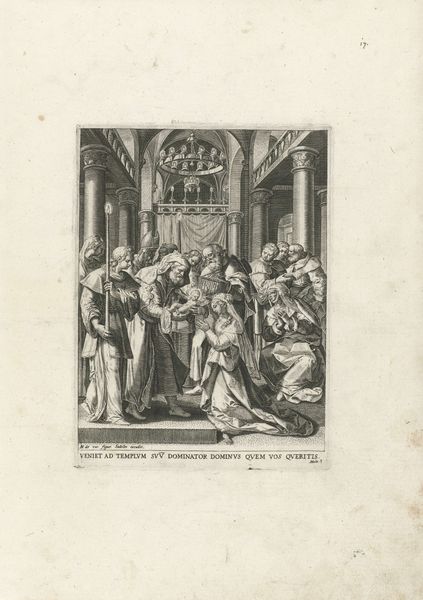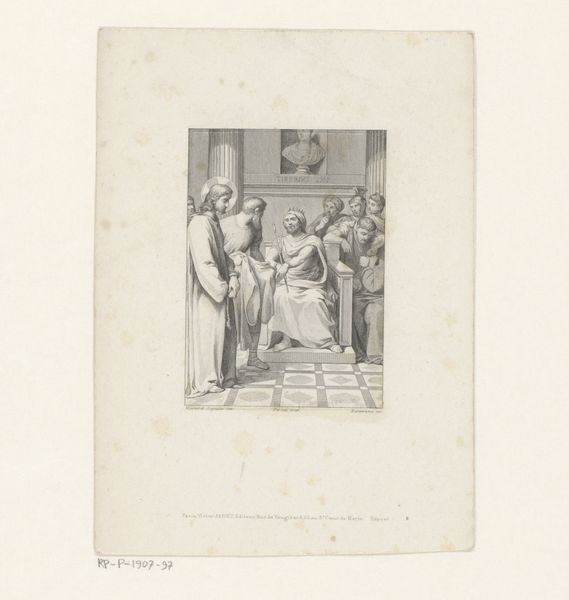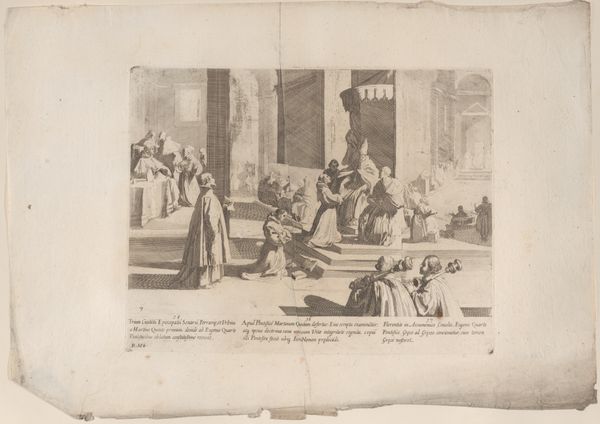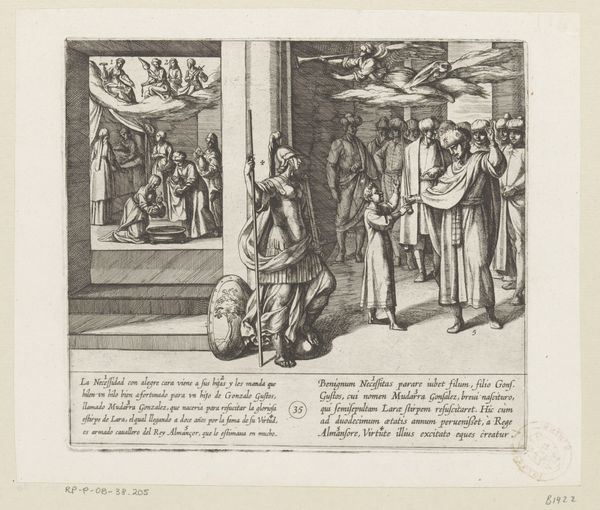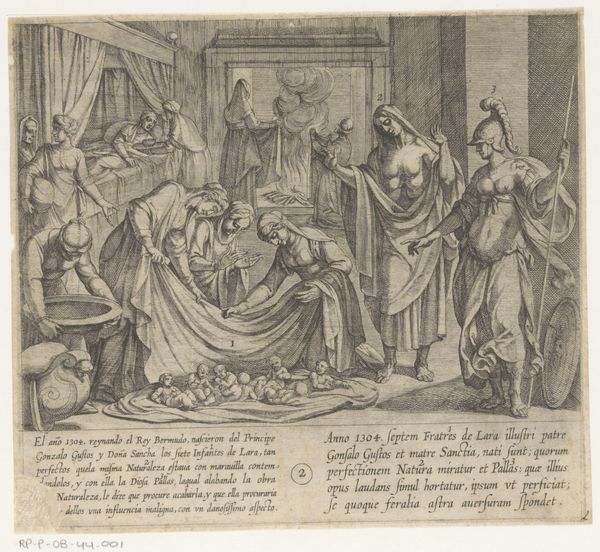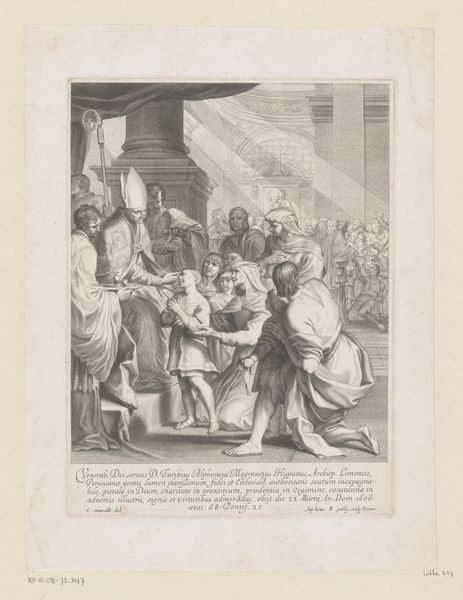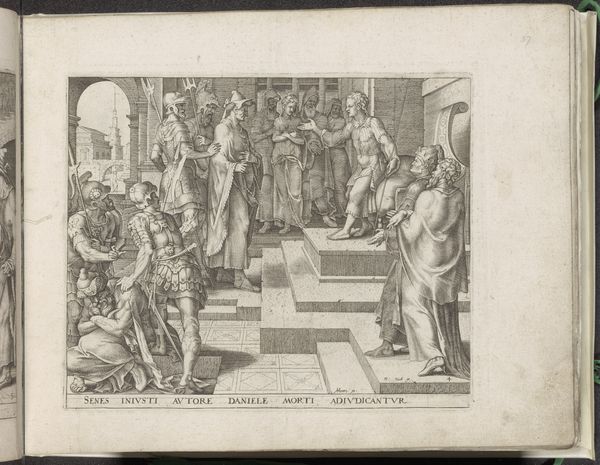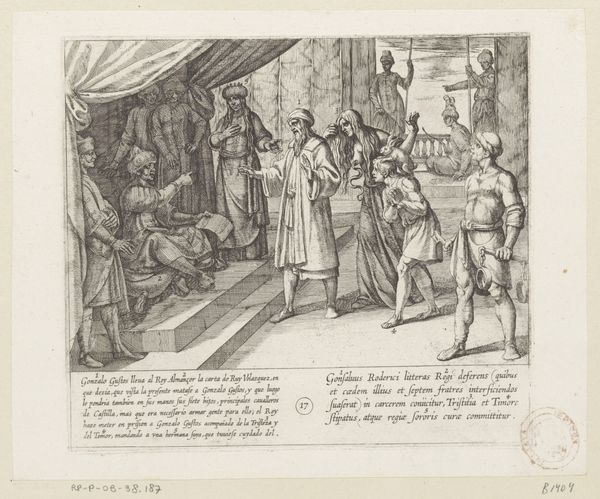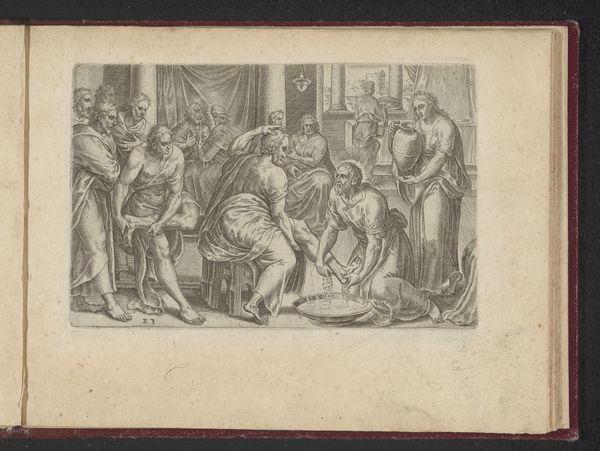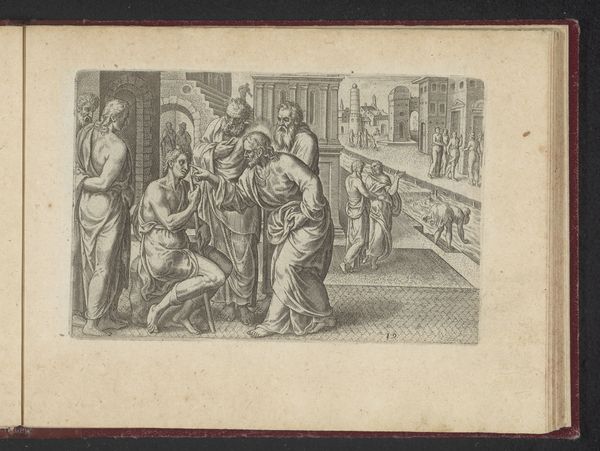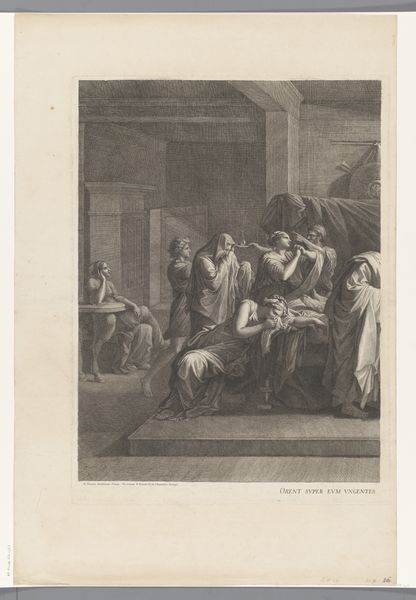
Episode 28: At Logronium Saint Bernardino brings an injured boy back to life; Episode 29: Saint Peter appears to Saint Bernardino on the road to Rome; Episode 30: Saint Bernardino falls ill and dies in 1444, from "The Life of Saint Bernardino of Siena" 1610 - 1639
0:00
0:00
drawing, print, engraving
#
drawing
#
baroque
# print
#
figuration
#
history-painting
#
engraving
Dimensions: Plate: 8 3/8 × 10 13/16 in. (21.3 × 27.4 cm) Sheet: 12 3/16 × 17 3/8 in. (31 × 44.1 cm)
Copyright: Public Domain
Editor: So this print, made sometime between 1610 and 1639 by Bernardino Capitelli, depicts scenes from the life of Saint Bernardino of Siena. It looks…well, quite dramatic. The figures are arranged almost like a stage scene, and there's so much going on. What do you see when you look at this print? Curator: Oh, drama indeed! It’s bursting with baroque energy. I see Capitelli grappling with a profound question: How do you capture the essence of faith, suffering, and miraculous intervention on a single sheet? The figures huddle together, their faces a mix of grief, supplication, and…well, I almost want to say expectation. See how he uses light and shadow – the *chiaroscuro* – to create depth and draw our eye to the central, most poignant moment: the limp body of the boy being resurrected. Editor: I notice the way Saint Bernardino’s figure is illuminated in all three scenes, almost bathed in divine light. It's very effective, but also a little… theatrical, perhaps? Curator: Exactly! Theatricality wasn't necessarily a negative thing in the Baroque era, darling. Think of it more as… heightened emotion, a way to make the story more engaging, more *real* for the viewer. This wasn't just history; it was a visceral experience. Now, look closely at the architectural elements in the background. What do they suggest to you? Editor: They’re simple and functional. Very much of the period. Are the three scenes meant to occur at the same location, do you think? Curator: Intriguing question! I imagine Capitelli’s intention was more allegorical, using architectural continuity to bind the three parts of Saint Bernardino’s biography as moments within a long spiritual path. I now find this baroque history all the more rich. What a lovely artwork to explore, yes? Editor: Yes, absolutely! Seeing it broken down, you notice so much. I appreciate it.
Comments
No comments
Be the first to comment and join the conversation on the ultimate creative platform.
